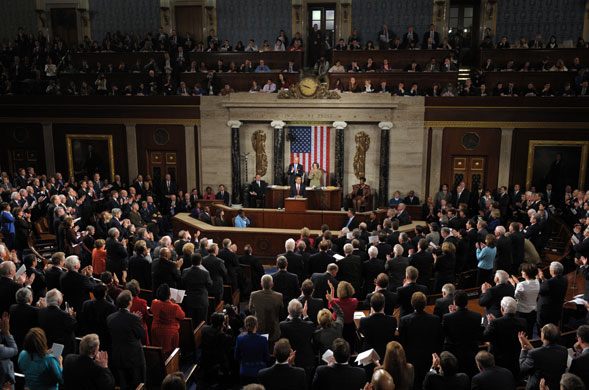
The State of the Union often provides for dramatic political theatre. While watching President Obama’s first State of the Union Address last night, I could not help but think about a particular subplot associated with the speech–the Republican caucus and the “standing ovation problem.” With respect to being the party not currently occupying the White House–from the individual member all the way up to the full caucus–it is difficult for the individual member to determine (1) whether to applaud (2) if a given statement by the President is worthy of a standing ovation. From my passive consumption of the television coverage, there was clearly significant variation in the number of Republican caucus members standing at any given applause moment.
For those not familiar, here is a State of the Union based description of the standing ovation problem. “The standing ovation model illustrates a familiar decision-making problem: after hearing a given statement by the President a subset of the audience begins to applaud. The applause builds and a few members of the respective caucus may decide to stand up in enthusiastic recognition. In this situation every other member of the respective caucus must decide whether to join the standing individuals in their ovation, or else remain seated. It is not a trivial decision; imagine, for example, that you initially decide to stay down quietly but then find yourself surrounded by people standing and clapping vigorously. It seems plausible that you may feel awkward, change your mind and end up standing up, saving yourself a significant dose of potential embarrassment. Analogously, you probably wouldn’t enjoy being the only person standing and clapping alone in the middle of a crowded chamber of seated people.”
While often considered along with other related information cascade problems, generating agent based models for the so called “standing ovation problem” has been the focus of a number of scholars. For example, along with John Miller (Carnegie Mellon), Michigan CSCS Director Scott E. Page has authored a leading article on the “standing ovation problem.” Using an agent based modeling approach, Miller & Page analyze a variety dynamics associated with this rich problem. For those interested, here is a link to a standing ovation ABM in Netlogo (requires Java).
